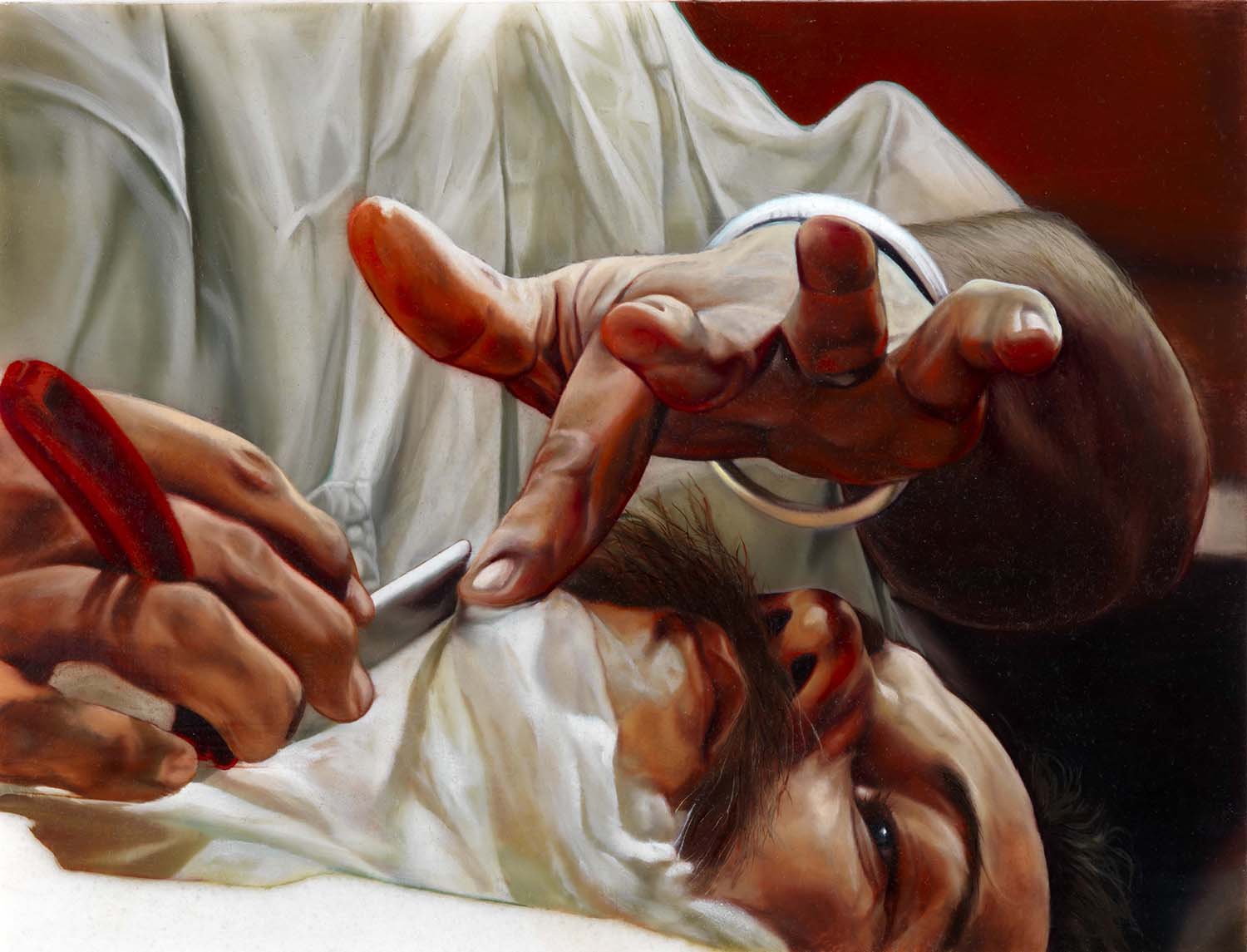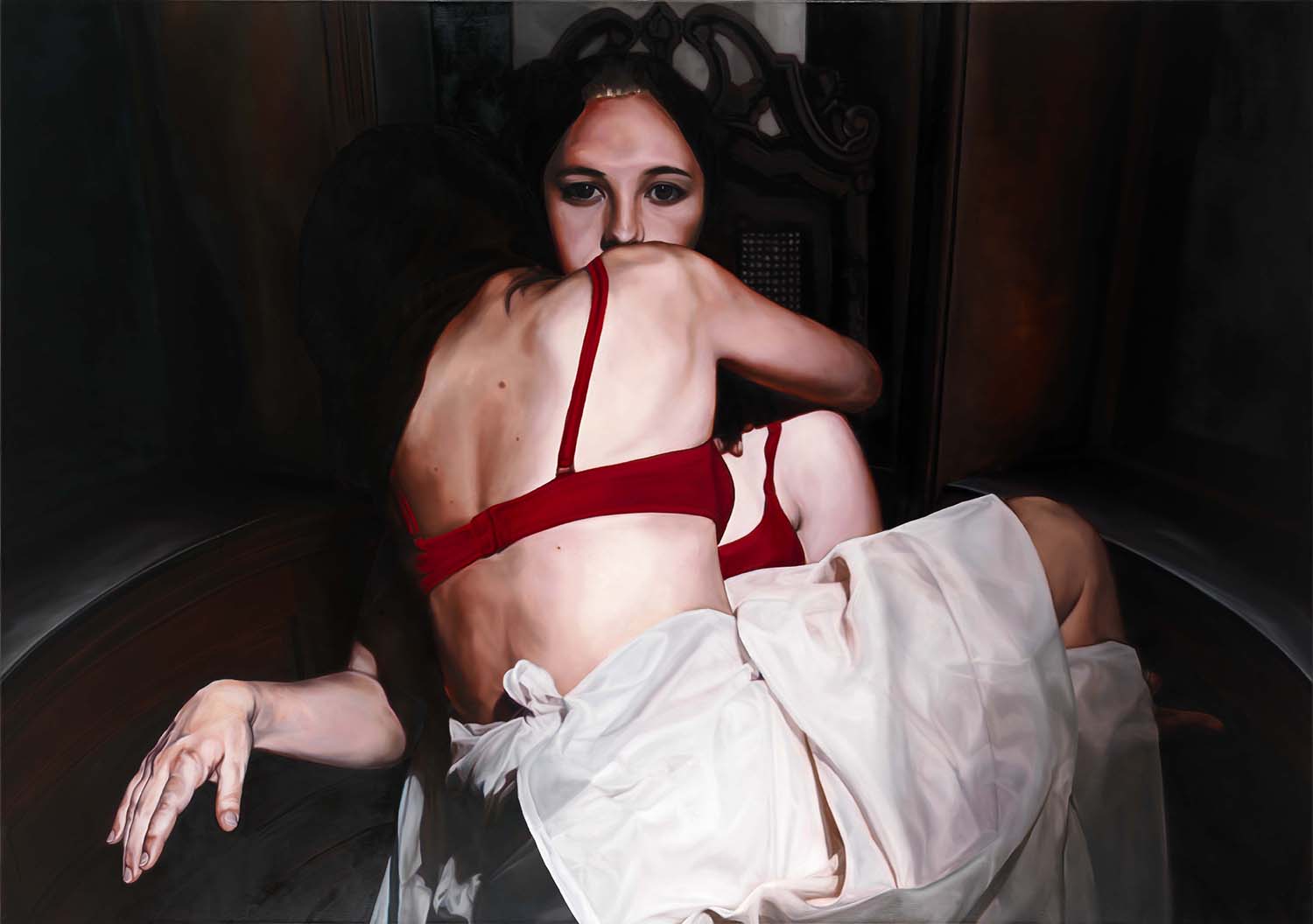A catalogue was published for the exhibition – Kysilkova katalog
When Barbora Kysilkova set out to become an artist she was young, albeit determined. With a non existing budget she started to paint large scale motives on packing paper and the like. This was also around the time when she and I first met in Barbora’s hometown Prague, a city that offered a lot, but no prospects for a young artist keen on learning how to paint.
That was eight years ago.
A lot has happened since. On the quest for the most adequate painting technique to express what she was looking to say, Barbora Kysilkova started to concentrate on figurative oil painting with the deepest conviction.
Although several voices tried to dissuade her from following the tradition, (mostly because figurative oil painting is not considered contemporary but solely suitable for socialist realistic painting) she did not rest until she mastered the technique.
With her work, Barbora Kysilkova allows the viewer to encounter art in its basic purposes: He/she is touched visually, intellectually and sentimentally. The atmospheres created in her paintings reveal to the vis-à-vis a part of his/her very self and thus raises his/her awareness of his/her self.
The paintings in this catalogue share the element of fleetingness. The scenes they capture hover between past and future, leaving the viewer on the edge between comfortable and uncomfortable. The role of the voyeur which is imposed on the viewer appears as a connecting moment between the works.
The artist skillfully brings out the spatial and physical circumstances of the situation and thus creates an intimacy between the viewer and the scene. Nowadays we are constantly confronted with a huge number of intimate pictures especially through social media.
The meaning of these digital images, although the pictures are probably stored in some virtual space for eternity, is not of long duration.
It is the process of painting that makes the difference. The technique of oil painting allows the accuracy that the very personal moments ask for, and changes a short, unstable moment into a long-living image.
The skills the artist performs to create his work give the picture its value.
The stylistic choice of figurative oil painting allows great emphasis on details; however a minimalist reduction to the necessary happens in the composition. The artist only shows what is needed to be shown. The suicide of “Lucretia” can be understood from the stabbing knife alone. A face that shows desperation and pride by its expression is not needed. It is all said.
Through the darkness of the room in “At Grandma’s“ it is left to the viewer what to see in the situation. A grand-daughter, caressing her grandmother to sleep. Comfort or consolation. Fear or farewell.
In “Katka“ we find ourselves close with a drug addict we so far might have watched from afar with mistrust, lack of understanding, pity and disgust. In the painting we find a woman depicted in immediate proximity with delicate features and a confident mien. We lose the barrier of the from-far-observer and find ourselves to a share a very close and personal moment with the figure.
In “Aquarius“ the voyeuristic moment is disturbed. The flash the figure glances us exposes us to ourselves as the voyeur. The decision whether the expression in the glance speaks of invitation or suspicion is open to the viewer.
The voyeuristic moments in the pictures evoke either curiosity, arousal, anxiety, consternation, fascination, the feeling of superiority, or a quick pinch of unease. Without a viewer to generate these feelings to balance comfort and discomfort the painting stays unfinished.
Thou art – you are. Through the very personal perception of each moment we recover ourselves in one of the main tasks human beings are meant to fulfil: creation.
I am very happy and proud to introduce this catalogue with its very carefully chosen works of Barbora Kysilkova: works that powerfully reveal to us the strength of a classical technique that for good reasons is slowly but surely being brought back to today’s art market.
Michelle Schuhmacher




